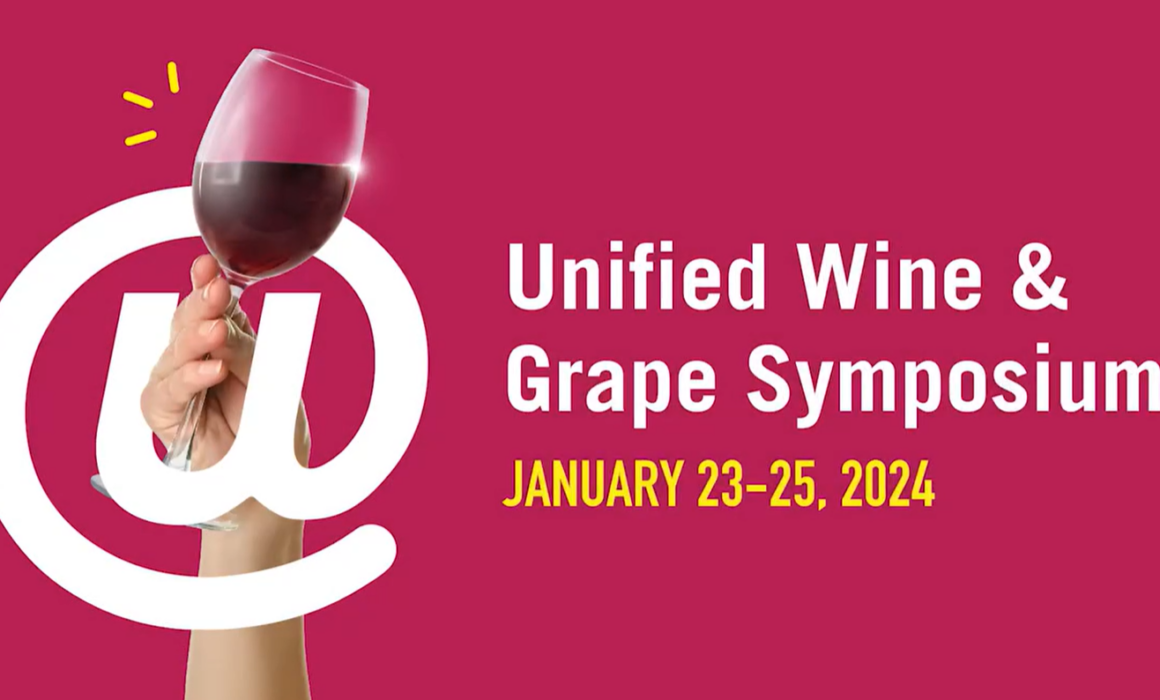Unified’s 30th Year
By Virginie Boone
The Unified Wine & Grape Symposium taking place over three days this week in Sacramento is the country’s biggest wine and grape conference and a well-attended gathering for the industry. This year is the annual event’s 30th.
Described by The Wine Economist’s Mike Veseth as “the Super Bowl of North American wine industry events,” when Unified first began in the mid 1990s, the wine market in the United States was growing thanks to the country’s demographics, rising wealth and a cultural embrace of moderate wine drinking as reasonably good for one’s health.
The event’s rise ever since reflects wine’s dramatic growth over all that time. The first Unified brought in 500 attendees and featured 20 exhibitor tables. In 2023, it drew more than 10,000 attendees and had over 650 exhibitors.
The event’s relevance began in 1995, the year the California Association of Winegrape Growers (CAWG) joined with the American Society for Enology and Viticulture (ASEV) to create the show, combining a trade show with a series of information sessions.
At the time, outgoing ASEV President Tom Peterson of Chateau Souverain Winery in Sonoma County was quoted saying, “The wine industry is experiencing incredible growth in the face of neo-prohibitionist threats, rising costs of goods and stiff competition. And I think one of the reasons we’ve been so successful is that we’re finally getting the clue that we need to work together.”
CAWG itself was established in 1974 by a small group of grapegrowers concerned about getting fair prices for their grapes. Other specialty crops had statewide organizations, but wine grape farmers did not. A survey of growers was commissioned to determine if an organization should be set up and it was.
Today, CAWG is governed by 27 growers who are elected to serve on the board of directors. From Sonoma County, Duff Bevill of Bevill Vineyard Management is currently serving as secretary of the organization and as a director from District 1 (which includes crush districts 1, 2, 3 and 4). Other Sonoma County winegrowers currently serving terms include Cameron Mauritson of Mauritson Farms and Karin Warnelius-Miller of Garden Creek Ranch Vineyards. Karissa Kruse, from Sonoma County Winegrowers, recently served a term as a Director-At-Large, a role on the CAWG board established to better connect the statewide organization with the regional wine and grape grower associations.
As CAWG has grown, it has shined a light on the fact that wine grapes are grown in 49 out of 58 of California counties, with more than 110 varieties of grapes in the ground. And while California on its own is the fourth leading wine producer in the world behind Italy, France and Spain, less than 1% of the state is planted to vineyards, about 618,000 acres.
Among the other things CAWG tracks is the impact of wine and wine grapes on the California economy. The 2022 figures are such:
- Employment: 422,000 full-time jobs
- Annual economic activity: $73 billion
- Wages: $25.9 billion annually
- Taxes: $7.9 billion total
- Tourism visits: 25.2 million wine-related tourist visits annually to wineries
- Tourism spending: $8.6 billion in estimated wine visitor-related expenditures annually
Given the importance of wine grapes, CAWG takes on a range of issues that affect the people who grow them, from pest and disease management to advocacy with state and federal lawmakers.
CAWG both sponsors and supports legislation it sees as positively impacting grapegrowing and works to oppose legislation that does not. Recent examples of legislation it has sponsored includes bills to increase groundwater recharge (which was signed into law), divert high-flowing streams for irrigation ponds (pending) and a $5 million appropriation to fund smoke taint research (failed).
CAWG also partnered with the Wine Institute in 2003 to establish the California Sustainable Winegrowing Alliance (CSWA) and implement the Sustainable Winegrowing Program, a workbook tool for vintners and growers to assess their practices and improve their sustainability. For its efforts it has been awarded the Governor’s Environmental and Economic Leadership Award three times, in 2004, 2010 and 2015.
CAWG also hosts an Awards of Excellence Reception at Unified to honor its Grower of the Year, which this year is Sangiacomo Family Vineyards, a Sonoma County pioneer in grapegrowing, particularly in the Carneros and Petaluma Gap AVAs.
Former CAWG President Karen Ross, a 4-H kid from Nebraska, played an important role in expanding Unified during her tenure between 1996 and 2009, and now serves as Secretary of the California Department of Food and Agriculture, appointed first in 2011 and re-appointed in 2019.
Secretary Ross will give the keynote address at Unified on climate-smart agriculture, automation, biological solutions and energy challenges in California’s agricultural landscape to discuss sustainable solutions that empower growers and winemakers.


